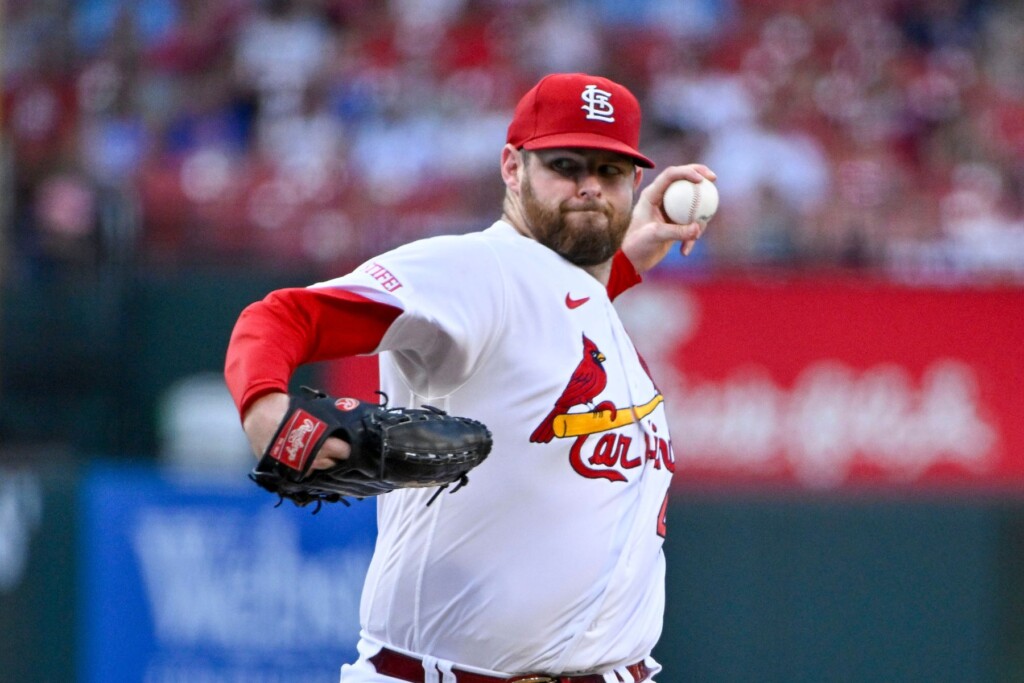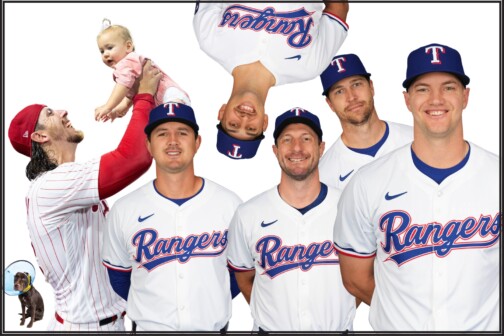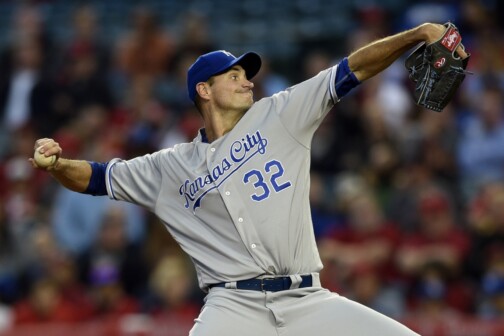I remember exactly where I was when I learned the Rangers were about to trade Edinson Volquez for Josh Hamilton in 2007. And where I was three years later, when I heard the Rangers had swooped in and traded for Cliff Lee.
And on Saturday, when I found out 17-year-old Sebastian Walcott had been pulled from his rookie-league game on the backfields in Surprise, Arizona.
I was at a dog beach (called … Dog Beach) in San Diego. It had been one of the most relaxing, stress-sloughing, make-myself-do-nothing hours I’d had in a very long time, watching pups playing fetch with their people in perfect weather at the mouth of the San Diego River, where it feeds into the Pacific Ocean.
But it was July 29, three days before the trade deadline, and there was no way I wasn’t going to check Twitter every few minutes. It would have been stressful not to. The Rangers were not only still in first place in the A.L. West, with an aggressive GM running plays, but they were also busy losing games and key players. What seemed for weeks like it would be merely an all-out quest for bullpen help had turned into something altogether different: claiming a seat at the high-stakes starting-pitching table.
Walcott was replaced in the top of the fourth. Not injury-related, reported several credible tweets. Oh, and in North Carolina, there were conflicting reports that prized pitching prospect Brock Porter was possibly being scratched from his Down East start. (He wasn’t.) The Frisco lineup was posted, and infielders Luisangel Acuna and Thomas Saggese were missing from it.
Was Justin Verlander on the verge of being sent to Texas, trying to help the Rangers stave off his former Astros teammates?
Nine miles from Dog Beach, Chris Young was holed up with his inner circle, from whom I imagine he’d stepped away probably no more than the 30 minutes it took to sit in a chair on the field at Petco Park for Jake Peavy’s induction into the Padres Hall of Fame the night before, maybe the only pleasant on-the-field moment for Young all weekend.
It turns out the Saturday afternoon frenzy he’d helped send the Twitterverse into had nothing to do with Walcott. Or Verlander. By the time I’d left Dog Beach and headed to Blue Water/Ocean Beach for lunch, the news was out: The Rangers had a trade in place for three-time Cy Young Award winner Max Scherzer. As long as the Mets would significantly pay down the highest AAV in baseball history. And as long as Scherzer would waive his no-trade clause. And as long as he’d exercise his player option for 2024, so the Rangers wouldn’t run the risk (however minimal) of him bolting after just three months. And as long as the league would approve the cash exchange.
And as long as the Mets would do all this, not for some combination of Walcott and Porter and Saggese and Acuna – but for Acuna alone.
It’s a fascinating deal: an aging 39-year-old star who was probably only available because his measurables are down for a rising prospect who was probably only available because there was no obvious path for him to Arlington. Scherzer will be a Ranger in both 2023 and 2024; there’s no guarantee Acuna would have arrived either year.
Before the final details were announced, I thought maybe both Acuna and Saggese were New York-bound. It wouldn’t have surprised me, especially given the speculation that the Mets were heavily subsidizing Scherzer’s deal.
As it turns out, the Mets are paying so much of Scherzer’s contract that the Rangers, according to USA Today, will be responsible for only $10 million of the $15 million-plus he’s still owed this year and $12.5 million of his $43.33 million salary in 2024. What the Rangers will pay Scherzer in 2024, then, will be $7 million less than Martin Perez is making this year, and the same as the AAV on Andrew Heaney’s two-year, $25 million deal (assuming he exercises his 2024 option. It’s mildly shocking to me that the Mets couldn’t have squeezed more than Acuna from Texas (or some other team), but perhaps they knew which teams Scherzer, one of the game’s elite competitors, would not allow a deal to go through with.
As it also turns out, Saggese was being held onto for another trade, this one on Sunday (I’ll remember where I was for that one, too – in the air, minutes from landing at DFW): to the Cardinals, along with Double-A pitcher Tekoah Roby and up-and-down reliever John King, for two pitchers who will be free agents this winter: starter Jordan Montgomery and middle reliever Chris Stratton, plus some international bonus pool cap space, which was redirected in whole or in part on Tuesday to the Pirates for catching whiz Austin Hedges, who will presumably replace Sam Huff as Mitch Garver’s sidekick behind the plate until Jonah Heim returns. Though he didn’t go to St. Louis in the deal, reliever Joe Barlow was dropped from the 40-man roster to clear space and could be lost on waivers or in a cash sale.
Statistically, Montgomery has been more effective than Scherzer this season, and I have no reason to believe that won’t continue. I also didn’t like the Montgomery deal as much.
Roby, who was going to be No. 12 in my midseason Rangers prospect rankings update, may have no more than Dane Dunning upside, but that’s especially valuable until the late stages of arbitration. As for Saggese, my No. 13, he’s a heck of a hitter and an exceptional human, the type you can imagine having his own team Hall of Fame ceremony even if he never plays in an All-Star Game.
It’s a high price to pay for a pair of rental pitchers–and not even the key rental reliever from the Cardinals, as they had sent hard-throwing Jordan Hicks to Toronto earlier on Sunday). Neither Roby, who has been shut down for two months with a shoulder injury after elbow trouble in 2021, nor Saggese was irreplaceable. But you can only trade them once.
Truthfully, if Acuna (my No. 5 prospect) and Saggese had gone to the Mets and only Roby (and maybe a lesser prospect) had gone to the Cardinals, I’d have been fine. Still, regardless of which team they ended up with, turning your third- and fourth-round picks from 2020 (both Roby and Saggese would have been in this year’s draft had they gone to college) and an international player who had signed for a relatively non-premium $425,000 bonus into Scherzer, Montgomery, and Stratton is the result of good scouting, successful development, and opportunistic GM’ing. Toss in the late June trade of Cole Ragans for Aroldis Chapman, and credit can be expanded to the organization’s medical, and strength and conditioning groups.
For that matter, credit this Rangers squad for playing well enough to set up that sort of go-for-it game plan in the front office.
All told, the addition of Scherzer and Montgomery to the rotation, plus Stratton to bring more veteran presence to the beleaguered bullpen, will unquestionably help. It doesn’t put a dent in the big-league roster, either. Texas came into the season–and jumped out to a great start–featuring a rotation of Jacob deGrom, Nathan Eovaldi, Jon Gray, Heaney, and Perez. Now deGrom and Eovaldi are hurt, and the other three have been inconsistent. Scherzer and Montgomery probably front the rotation until Eovaldi is back, leaving Gray to slot in fourth. For now, two of Dunning, Heaney, and Perez should keep getting starts; when Eovaldi is back, only one will. That’s assuming there are no more setbacks in the group.
The Rangers could still use another reliever, preferably a power arm from the right side. And a big bat. And some luck with Heim’s wrist recovery. But if Heim (maybe the team’s most indispensable player), Eovaldi, and Corey Seager were going to get hurt, at least they had the decency to do it in July, and not August. It at least gave Young a chance to respond. And boy, did he.
As aggressive as Young was on Saturday and Sunday, the team on the field was anything but. The Rangers didn’t look overmatched so much as tentative and lifeless. They are very good, but some players looked like they were weighed down by trade rumors or pitching for their rotation life. Maybe the high-intensity series with the Dodgers and Astros, mounted by the losses of Heim and Eovaldi, had zapped their life force.
Sure, the Rangers are bound to cycle back up and spend the season’s final two months zeroing in on a playoff berth, and maybe even home field. But it’s a team that went 40-20 to start the season, then 12-19 after that. One that went 6-0 against division-leading teams coming out of the All-Star break, and 2-7 since (and had to dig out of multi-run deficits in the first inning of the two wins). There’s more to be done. There’s no guarantee that 2024 or 2025 will go as well as 2023 has, and it’s no longer acceptable to consider this “year early” run atop the division as icing. The American League is not great this year. Eat the cake when it’s in front of you.
Author







